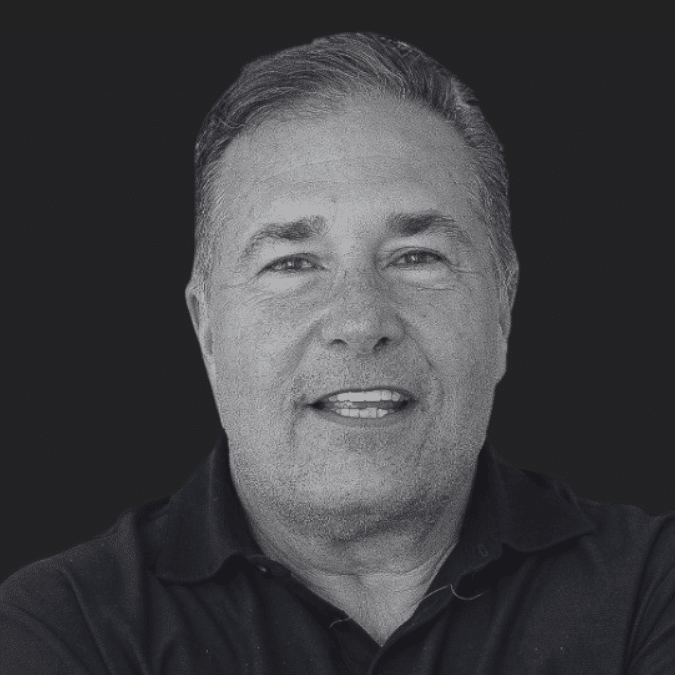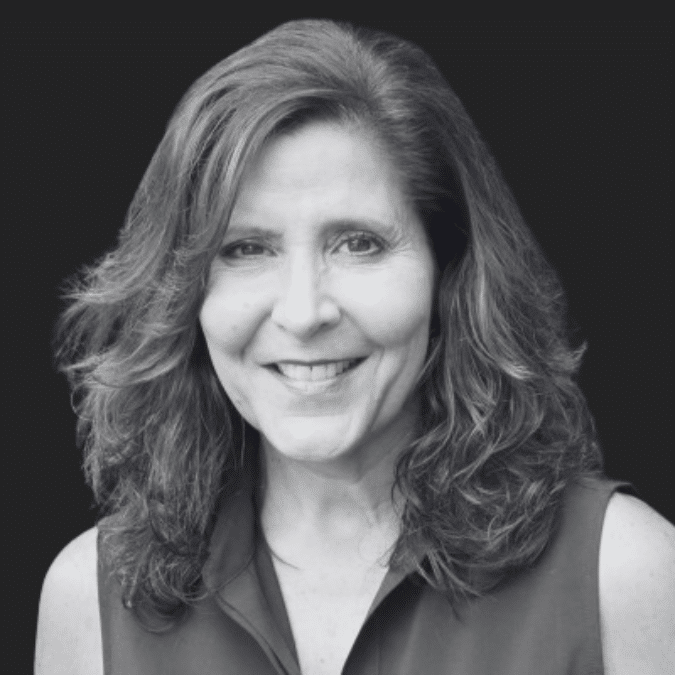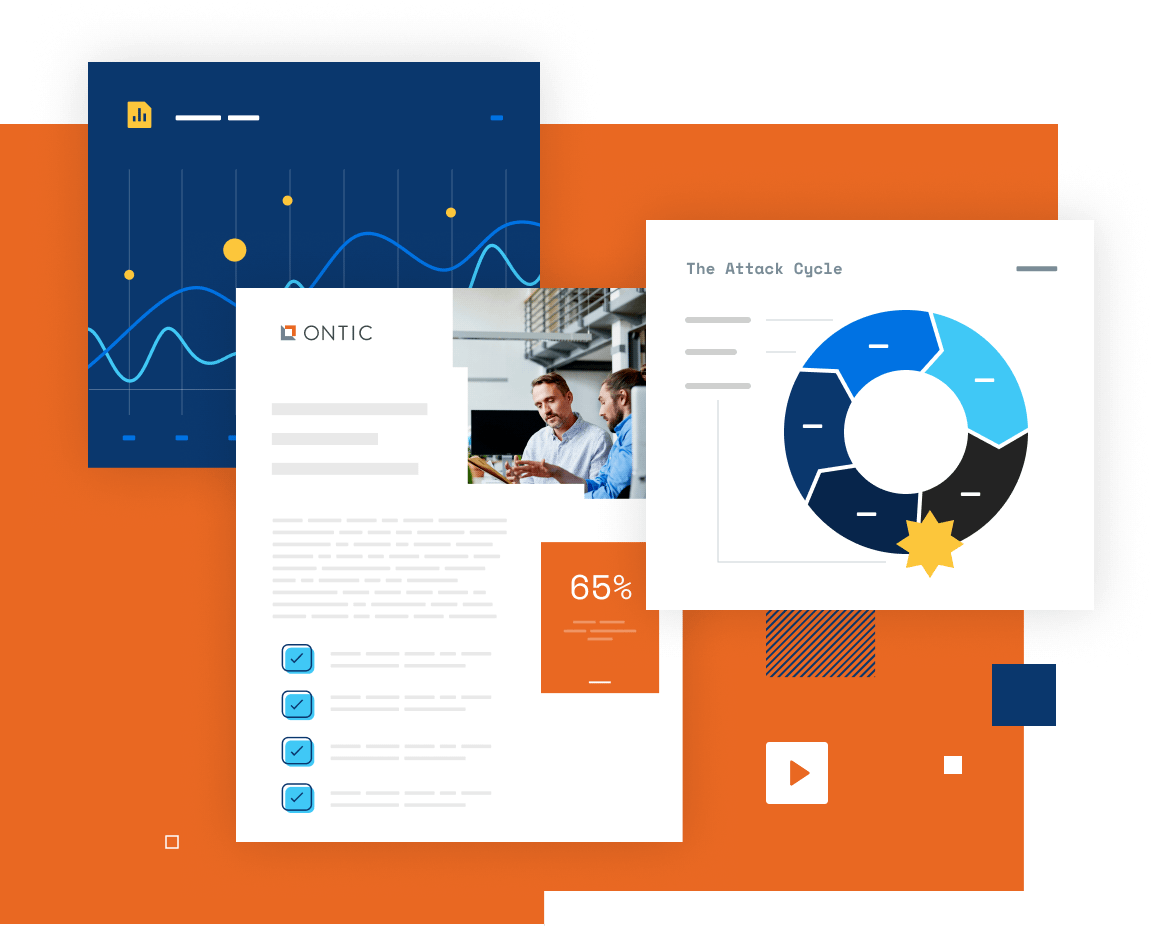October 29, 2025
Where Public Meets Private: How Technology Is Shaping the New Era of Protective Intelligence
Connect with us wherever you get your podcasts
In this episode
In this episode, host Fred Burton and co-host Cindy Marble sit down with Michael Evanoff, CSO at Verkada, to discuss his remarkable career spanning corporate security and diplomatic protection. Evanoff reflects on his experiences at the U.S. Department of State and in the private sector, sharing lessons on leadership, collaboration, and adapting protective strategies across diverse environments. The conversation also explores how modern technologies like AI and cloud-based video systems are revolutionizing threat detection and proactive protection across industries.
Learn more in Ontic Resources.
0:00
Fred:
Hi, I’m Fred Burton here today with my good friend Cindy Marble, and we are both very excited to have Michael Evanoff, the CSO of Verkada on. Mike is the Chief Security Officer and Strategic Advisor at Verkada, a leader in cloud-based physical security solutions. He previously served as Assistant Secretary of State for Diplomatic Security, leading the world’s most widely deployed law enforcement agency. Mike’s service has earned him honors such as the U.S. Presidential Meritorious Service Award, three Department of State Superior Awards, and international decorations from Lithuania and Estonia. Mike brings 40 years of experience in corporate security and diplomatic protection, including leading roles with NATO, Coca-Cola HBC-AG, Walmart International, and Jabil. Mike, welcome to the Ontic Connected Intelligence Podcast.
Mike:
Fred, thank you very much, and good to see you and Cindy. Finally, we get to talk together.
1:44
Fred:
For sure. Let me kick it off with your first question. Tell us a little bit, Mike, about yourself and your background.
Mike:
Well, I’m very fortunate. When I say fortunate, I am humbled in that sense that I’m very fortunate to be part of a timeframe where in 1985, the U.S. Department of State, actually the Security Office of Security for the precursor for DS wanted to enhance and improve themselves. We’ve lost too many embassies, too many ambassadors. We were basically having our butt handed to us by the enemy. And we could not conduct diplomacy in that way. Absolutely not. So they rethought how can we build a bureau with folks, guys and gals that really take it as a passion, not a job, because foreign service is a passion, just like Secret Service is a passion, right? You put yourself in front of a bullet, or you’re putting yourself in front of protecting other people. It’s a different DNA, right? And so I think they went out and combed and basically found us. We were very fortunate, I say us because Fred, you were part of that collection, that cohort. Obviously, you had police background, I didn’t, I basically played football in college. And like, dude, I want to keep the adrenaline going and keep going with it. So show me, tell me, tell me what to do, and I’ll do it. So I was just an eager guy at 23 years old, very fortunate to be at the right time, right place for the Bureau of Diplomatic Security being born at that time, and you know it very well.
Fred:
Thank you, Mike. You know, it certainly is amazing when you think back over the years, and I know you and Cindy are very good friends as well, and it’s always a pleasure on our podcast to have folks on we know and have similar experiences. And I have to say this, that I think the mark you led on our old organization, the Diplomatic Security Service, that some of the successes and changes that exist today are a large measure to the efforts that you put into that. So I think I speak for a good number of my old and former colleagues by saying, you know, we thank you for what you have done for us.
Mike:
No, the pleasure is mine. I mean, I’m very fortunate. I was asked to come back after our consulate in Benghazi, and you know this very well, was attacked. And Secretary Rice was asked by President Trump, listen, I don’t want that on my watch. I need somebody, something to make sure that doesn’t happen. And she says, listen, I think I know the person. I hit eight embassy postings overseas, most are more high threat, beginning with Philippines, Sarajevo during the war, and then basically Islamabad, Pakistan before, during, and after 9/11. So in a lot of ways, wanting a locations that are epicenters of terrorism was something I really enjoyed myself personally, and I wanted to kind of give back. So I left the private sector to take on a job that I think was probably the best job I had is basically make sure our people do not get jammed up again like that, but also work with the Foreign Service, work with the CIA, work with anybody that had anything to do with that in the military. So a lot of it was not just clearing DSs house and working that, but it was also understanding, talking to the Near Eastern Affairs Bureau, political affairs, also understanding the CIA, what their mandate is and what they want to do in high threat locations that coexist with the U.S. diplomatic mission, right? And so that, to me, was a, OK, we’re going to do this,we’ve got to do this right. I’m not afraid. I did break some glass. I mean, they had to, right? Because we were, they were stovepiped. That night, September 12, 2012, should have never happened. There was nine, basically, groups fighting each other. And we’re trying to bring democracy into a location that didn’t need it or want it. So yeah, I wanted to kind of make change a little bit.
06:28
Cindy:
It sounds like you were the right guy in the right place at the right time for that as well, Mike. That was a horrific event, and I’m very glad that you were brought back for that. You left private sector, you left DS, and then private sector, and then back to DS. Were there any lessons learned in private sector? I mean, you were having to, like you said, the whole diplomatic scene, having to get people to talk to each other, break down silos. What did you take from the private sector and bring it into that time as coming back as an assistant sector?
Mike:
It’s a great question. Absolutely fantastic question. And both of you probably know the answer. It’s collaboration, right? In the private sector, a CSO, a Chief Security Officer, can’t live by themselves. Maybe if you were a Secret Service agent, you can tell the staff, hey, this is not going to happen today. Diplomatic security, no, this is not going to happen. But in the private sector, you can’t live in that world. You’ve got to work with everybody. And you got to find common ground to get a goal, right? Let’s find a solution to your problem and my problem, right? It’s just not just my problem. It’s also theirs, so a business that basically takes on shareholder responsibility, it’s like, yeah, we got to work together. And so I kind of took that. And it was interesting, as you say, because having had been in the financial world with a financial firm in New York, Och-Ziff, and then on to Coca Cola, Europe, basically, and then Walmart, you learn to to basically get along with everybody, but also bring best practices and solutions to the thing. And it wasn’t funny when somebody was coming in, coming back, I was not trapped in it. I mean, this to me being a person that I’m happy to be here, let’s just get all along. That wasn’t my mandate. My mandate is to make sure we don’t have another Benghazi. And the basically Middle Eastern Affairs and Near Eastern Affairs, NEA Bureau wanted to be everywhere at every time. And they just said, we couldn’t do that. So yes, collaboration, but also a hard no in a lot of cases. And with a purposeful answer, right? Just not a made up no, right? You need to show that the reason why not we’re going there is because this, this and that. And I remember the big question they wanted to say, well, the Russians are there. The Dutch are in Libya. We need to be there. It’s like, listen, they’re not the United States. They don’t have a target on their back. We do. Right? So it’s a different aspect.
Cindy:
I like the way you said, you know, It’s not necessarily a hard no, but it’s a no and here’s the reason. Talking to a former colleague the other day, and we all face this in our work before, we don’t get that many no’s. And when we do say no, we really need to have it justified. We need to have reason for saying no. And I think that’s one of the things that we’ve learned throughout our careers is like, hey, it’s not just no and you know, I’m not going to give you a reason and we need to be able to lay out the reasons why we say no. So that’s, I think that’s one thing that we brought from public sector to private sector is let me lay this out for you.
Mike:
Yeah, absolutely. And that’s hard for most government people to go back into private sector, and Fred knows this very well. You can’t just take the hard no’s, like make it happen. You’d be out, you’d be out.
10:30
Fred:
Mike, you know, it’s interesting as a student of protective history and looking at some of the cases that we were engaged with over the years. Obviously, I wrote a book about Benghazi with our old friend Sam Katz. I hearkened back to ‘86 when the Libyans hit our folks in Sanaa, Yemen, and Khartoum, hit our communicators there as they were driving to work. Those were Libyan-backed terrorist attacks. I was always amazed and, you know, the kind of work we did overseas and trying to protect diplomats, how challenging it is and how folks, you know, soon to forget. Mike, I’d like to shift gears here if I would. I mean, I know you’re at Verkada now. You guys are doing great things in the technology space. Can you speak a little bit about that as it pertains to like some of the things you’re doing to help protect people in places?
Mike:
Yeah, no, thank you for that. Because it is a very cool company. I’m very fortunate to be there. It’s funny, they went after me for a year and I stepped on and said, no, I’m not a vendor. I’m a practitioner. Right? It’s just like, dude, you got to at least see what we have.
Fred:
What were you a running back in college, Mike? I thought that you were like a linebacker or something.
Mike:
Nose guard, actually, but we won’t talk about that. But the fact that Verkada said, hey, listen, show, let’s see what he got. And it’s like, okay, I’ll see. And what I saw was absolutely amazing. And I’m not just, this is not a hyperbole. This is reality. I need to really make this a point. When you have computer vision driven by AI to understand facial and license plate recognition, this is a game changer in a lot of ways and keep it connected all within the one system. Every CSO, I mean, let me give you an example. I’ll go back to Van Gazelle. Benghazi that night, we were attacked and we were burned, burned to the ground. Our NDRs and DVRs went up in smoke. Basically, what we were recording in the cameras went up. There was nothing that went to the cloud, because there was no cloud-based anything at that time, right? And so we would have found out, if we had Verkada’s system that night in Benghazi, we would have identified the leaders in the crowd that attacked our consulate, we would have used that information going to the tier one assets and to FBI to say, okay, he’s our target. In a matter of weeks, maybe a month or two, we would have got that. Because we didn’t have that, our NVRs blew up and went in smoke. We then had to put assets on the ground, human assets, to identify who, what, and where that happened that night. Took years instead of months. So to me, that is a big call about having not on-prem stuff. And the U.S. embassies still do on-prem stuff. And to me, that’s a miss. And that’s one of my hoping to change here. But Verkada basically has identified, hey, as a CSO, you probably want to know if you have a plan if your people are wearing PPE or not. Well, they can tell you that. They can show you pre-operational surveillance. If something has happened, if you see a white van and you recognize that white van in the past, I was like, when was that white van happened? Well, you can go right to your phone and say, white van, January through December. And sure enough, it’ll show every white van that came up. It’s like, that’s the one. Amazing. It is. It is. It is, absolutely is. For me, it’s a very interesting thing that I believe has helped me really promote this space, but also can basically transfer to where I came from. And I know with Cindy, with the Secret Service and what she has done in the past, the same thing, right? We could have utilized that at Butler, Pennsylvania, to identify that kid that was doing pre-operational walking around before that, right? If we would have put a tower with her, right? I mean, anything is pre-operational surveillance. That’s what we always know about attacks. You are at a point where an event is usually a precursor. There’s a precursor to an event, right? If we can capture that with cameras, smart cameras that get smarter over time, and the firmware is basically sent over the camera. And to me, that’s like, okay, guys, you got my attention. Let me, what do you want me to do? And that’s, that’s why I’m here. I really want, I’m not evangelizing it, but it is, there’s a lot of case studies that could be utilized for that.
16:44
Fred:
You know, Mikey, when you were talking through that scenario, you know, I, I hearkened back to, I think it was 87 and we had a, a threat actor in DC who was there to attack the President and Secretary of State and so forth then fortunately, we were able to grab him in cooperation with the Secret Service, Metropolitan Police Department. And I remember talking to that individual at St. Elizabeth’s Hospital. And I said, well, you know, how did you follow the motorcade? And he said, well, I simply just sat outside and watched the motorcade leave the State Department. And then I just got in my car and I followed behind. and drove over to Bethesda, where the Secretary had lived. And, you know, the light bulb went off on my head that what we were doing just simply wasn’t working, right? And then, and I’m sure, Cindy and Mike, you know this as well as I do, that the technology evolution in this space, you know, the great things that Verkada is doing and Ontic is doing and so forth, has just really changed the face of protection. What do you think, Cindy?
Cindy:
Yeah, absolutely. I think the ability, as you both described, but I think Butler is probably a great example of just having that pre-incident, pre-attack behavior, and being knowledgeable and technology giving us that full picture. And if it’s just a matter of being able to, you know, go in and like Mikey said, you know, typing in white van or, you know, individuals out of sight or whatever it is and bringing that up and being able to surface that information and then say, okay, let’s see if we can identify this person. And then, you know, in my world, in the protective intelligence threat assessment world of saying, okay, what else can we find out? What else do we know? And being able to connect all those dots together and say, okay, you know, this is the limited amount of information that we know typically, how do we protect against it? And it gives us every tool that we need to be able to take that protective stance and make sure people get in and out okay. I mean, to ensure that there’s not another Benghazi, to ensure that there’s not another Butler. I mean, we in our former lives, have seen the changes that came out post Reagan shooting and when the Secret Service took on the Exceptional Case Study Project completely changed the way we did protection. That was the philosophy of threat assessment. Now when we’ve got technology, we need to completely change the way we do protection, again, by adding in these tools that give us a much better picture than we can get from being on the ground ourselves, from using manpower, as opposed to having technology do that for us.
19:57
Mike:
Absolutely. And that’s one thing great about Verkada. And you can get this, you don’t have to be in a SOC or a GSOC, you can get it right to your phone. Right? And that to me is a game changer in itself, because I don’t have to have my people be tied to it. I get an alert when a line has been crossed, basically a line that you draw virtually, when the AI recognized something has been crossed, then you want to know more about it. That’s to me, it’s like, I wish I would have, and that’s, that’s kind of why I’m passionate about it in a lot of ways, because I see what it was when we didn’t have it. Now that we do have it, it’s like, come on, guys, let’s make this happen. It’d be a lot easier on you. I mean, if you can identify loitering, and our cameras can identify loitering, basically more than two people together, it’ll alarm you to tell you that more two people have to come together, right? Loitering, it could be there’s meeting, a couple’s just meeting to do it, or it could be, again, planning for something else, right? But you at least want to know that the loitering has happened.
Cindy:
This could go back to, you know, UnitedHealthcare. And could we have seen the, you know, the pre-attack, pre-incident behavior of that individual, you know, scoping out, surveilling? And we understand, those that understand threat assessment understand pre-incident behavior. And, you know, like you said, hey, is loitering just, you know, two people meeting up and it’s an innocent thing, or is it pre-incident behavior? You have a big event, you have an event that will get attention, and sometimes negative attention. Do we need to make sure that we have eyes on that before the actual event happens? Absolutely. It gives us that threat picture.
Fred:
Cindy and Mike, I was thinking as you guys were chatting, just, you know, the evolution of technology in this space. And, you know, I was fortunate to have been talking to some of the old Secret Service agents, Cindy and Mike, that were, that are still alive, that were on the Lancer detail, the JFK detail at Dealey Plaza. And in those days, they had what they call flashcards, a three by five index card. You know, hell, I still use them for notes for my books. And on those little flashcards, they had a picture of the threat actor, and then you turned it over and it had, like, you know, the physical descriptors of that individual. And then you fast forward to the 80s, where we were still doing that on BOLOs or photocopies of sheets and pass them around details and so forth. And how far we’ve come, and when you look at systems like Ontic or Verkada today, where you can get it all on your smartphone, is just simply amazing from just an evolution perspective.
23:09
Fred:
But Mike, I would be remiss if I didn’t ask you, you’ve had such a storied career in the protection space, especially with the protection of foreign dignitaries and so forth. And one of our all-time favorites, obviously, was the protection of Princess Diana, which we had a lot of joint operations with and so forth. Could you share a few words about that? Because I’ve tried to explain to folks over the years as to how she was special. And for those of you who may be watching or listening to this podcast, you can see several pictures of Mike as the agent in charge of the Princess Diana detail. So I’ll toss it back to you, Mike.
Mike:
Now, listen, again, I was fortunate enough to be asked by the British Embassy, said, listen, we like you because I was in DPD at the time, our Dignitary Protection Division, and so I was with a German one day, a Saudi the next day, and so forth. Well, I got with, believe it or not, Princess Anne in Nashville, Tennessee. She was show jumping. She’s a world-class show jumper. And so I was with, it was very nice, you know, working with the British Embassy and also with the Metropolitan Police out of London. And it was just, it went really well. Well, they liked what they saw apparently and said, hey, can we utilize it? I’m like, listen, I’m only a 24 year old. Actually, it was 26 at that time. I can’t, you can’t ask me, I got to do my leadership. My leadership’s got to say yes or no. And so they said, okay, so next person that came in was Prince Charles. And so I headed up that detail. We took Prince Charles from New York to Washington, D.C., then on to Vero Beach, Florida for polo. Right. And so that was, again, another, he was very nice. It’s just a guy. But he was by himself. Then the coup was the, it’s like, listen, we think Princess Diana will be coming to New York in February of 1989. And we’d like you to head out. It’s like, well, I don’t know. That’s too big of a detail. That’s gonna probably go to somebody senior, but I’ll probably be on it probably as a shift leader. Sure enough, the top dogs took it. It’s like, OK, you’re a shift leader. But this was amazing detail. I’ve never seen this before. New York basically pulled out the red carpet for her. In the late 80s, it was all about the Royal family. It was about Princess Diana. And I’ve never seen this before. Streets, basically coming in from Kennedy Airport out there to all the way into Manhattan, the streets were clear. It was like the Pope, right? It was just amazing thing coming through there. And I forget the hotel that we stayed at, but she was always giggling up and down because I think reason why she was by herself, she was happy to be there. Just an exceptionally energized person, really, really nice. But the energy around her and her team at that time was just fantastic. You couldn’t ask for a better detail. So we did a lot in New York. We went to Harlem for the AIDS hospital that was up there. We also did housing projects. We also did some really nice to do stuff. But every time she was very nice. So one, I remember this today. We’re in the elevator. I’m in front, and the front door closes, and then we get her in. So I’m right there. She’s right behind me. And all of a sudden, I hear my earpiece goes out. She just pulls it out and yanks out my earpiece. And then she looks around, and she says, hee, hee, hee. I was like, oh man, this is, and it was like, okay, good. It was like, it was, how can you, I love that, right? You’re not going to get that from some stodgy poor minister, right? from Princess Diana. And then she got out and she skipped, literally skipped, to her room. And it’s like, how do you keep up with that? Just let her go. It was a magical time. It really was. Saying goodbye to her, she brought each one of us in, the leadership in, to give a picture. And I still have it, actually. And it was just an amazing thing. She was just very kind with our time with us, so it’s special.
Fred:
Well, I think we’ve all been very fortunate in our careers to get a behind-the-scenes look at how these senior foreign officials and senior government officials live, not only within the Secret Service, in our days with the Diplomatic Security Service.
28:00
Fred:
In closing, Mike, we ask all of our guests this question here at Ontic. What does Connected Intelligence mean to you?
Mike:
Well, since I’m pretty apprised on what connected intelligence is, I will say this. It used to be about understanding the ground, the intelligence, the operation, the principle, or the target, or whatever, right? It’s all connected to make sure it runs. But with Ontic, it’s different. It is about proactive in visual intelligence, working with access control, working with alarms, working with intercom, working with the mail room and also guests. All that in one package. That is an amazing thing. That to me right now, on top of my mind, is interconnected intelligence, which is all in one package.
Fred:
Well, Mike, it’s been an honor and a privilege to get you on our podcast. We really thank you and Verkada for making yourself available today. And before I go, Cindy, anything you would like to say for some closing remarks with Mike?
Cindy:
Thank you as well, not only for this, for your service, for everything that you’ve done for our country.
Mike:
No, listen, guys, I’m very fortunate to have you guys on this too, because I’m basically working or talking to two PII, protected intelligence, starters, right? People that are in the world that know it very well and was part of the groundswell of protected intelligence. Everything that we utilize today to understand a problem set or an individual or anything has to do with due diligence and intelligence. And both you guys are best in class in that. So that’s the secret sauce for a good program protecting anything; people, places or facilities.
Cindy:
Thank you.
Fred:
Thank you, Mike.
Mike:
Good seeing you guys. Thank you.
Fred:
Thanks for being here.
What you’ll learn
01
How Evanoff applied lessons from decades in diplomatic and corporate security to improve collaboration and risk management across organizations
02
Why technologies like cloud-based surveillance and AI-driven analytics are game changers for identifying pre-incident behaviors and enhancing real-time situational awareness
03
What the concept of Connected Intelligence means in today’s world of integrated security
More about our guests

Michael Evanoff is the chief security officer and strategic advisor at Verkada, a leader in cloud-based physical security solutions. He previously served as Assistant Secretary of State for Diplomatic Security, leading the world’s most widely deployed law enforcement agency. Evanoff’s service has earned him honors such as the U.S. Presidential Meritorious Service Award, three Department of State Superior awards, and international decorations from Lithuania and Estonia. He brings 40 years of experience in corporate security and diplomatic protection, including leading roles with NATO, Coca-Cola HBC AG, Walmart International, and Jabil.
Connect with Michael
Cindy Marble is the Executive Protection Practice Lead at Ontic. She is a retired special agent with the U.S. Secret Service, and is a nationally recognized leader in threat assessment and management. She has over 26 years of experience working protective intelligence investigations, national security, executive protection and global security operations, Cindy leads Ontic’s Threat Assessment and Management team that provides program development guidance and training to corporate security, executive protection and insider risk teams.
Connect with Cindy



